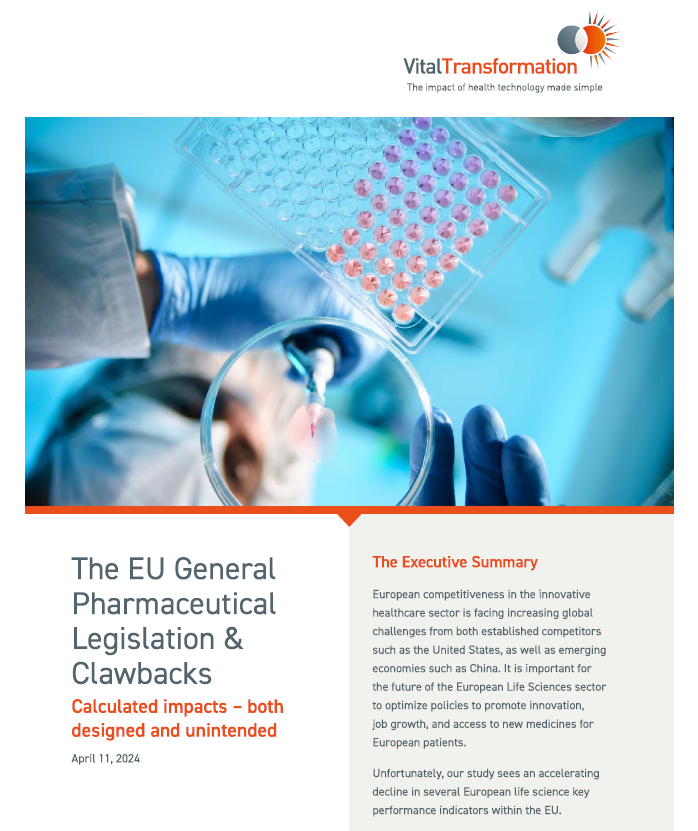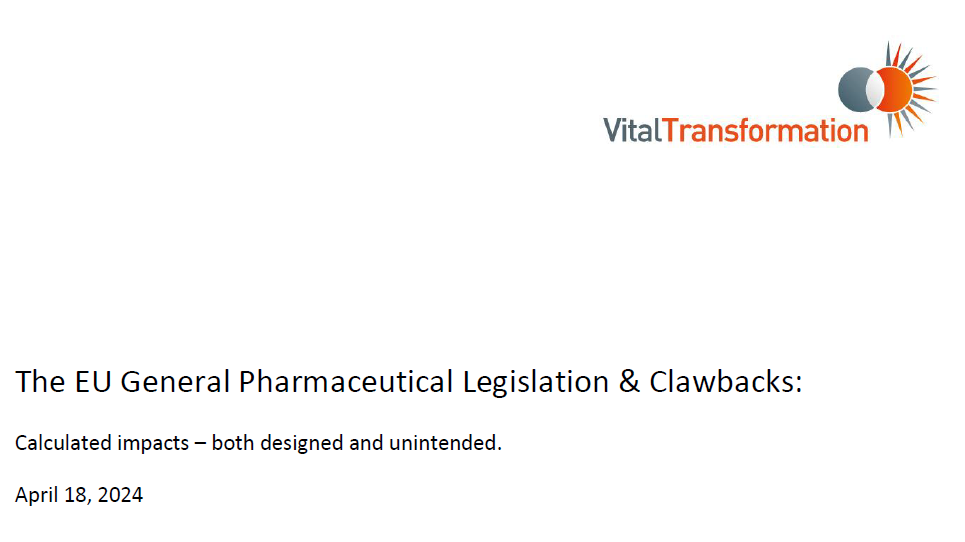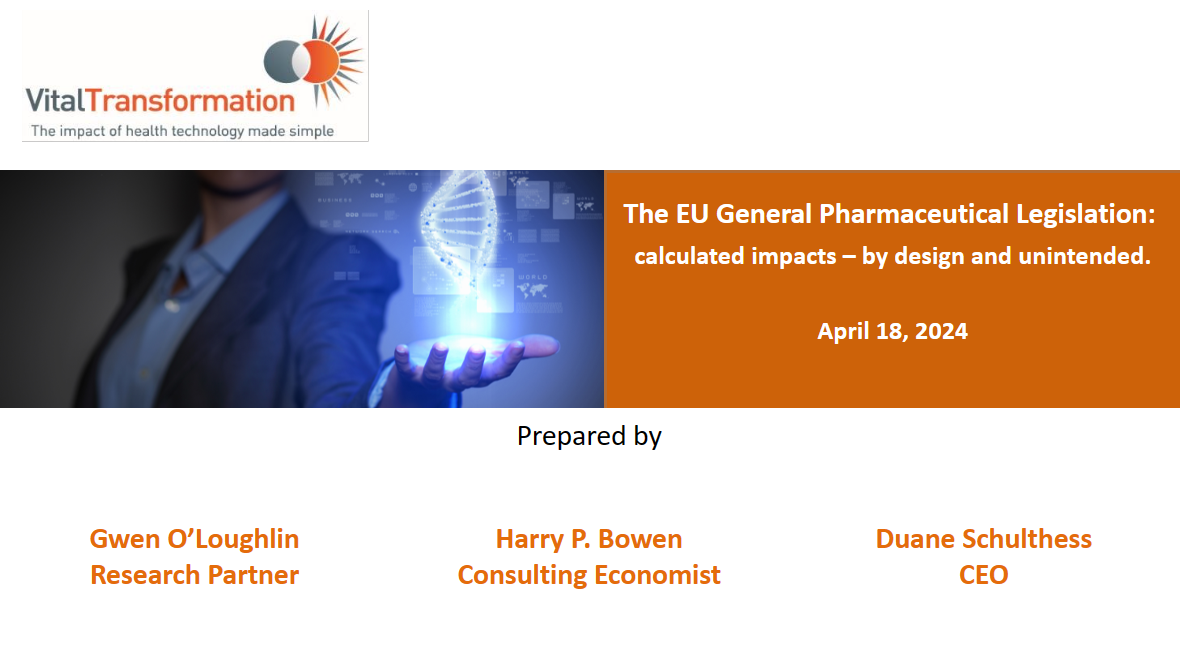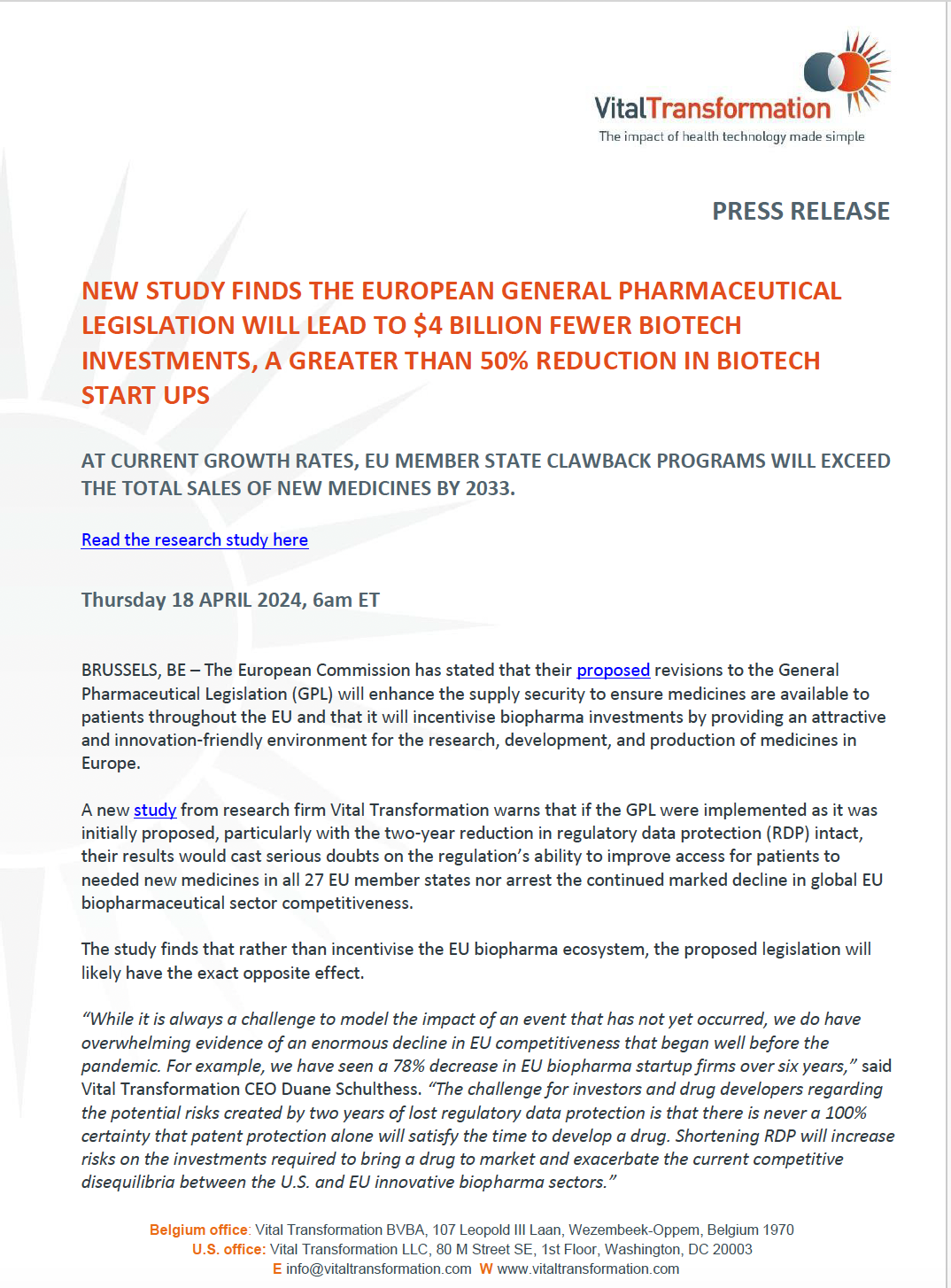The EU General Pharmaceutical Legislation & Clawbacks:
Calculated impacts – both designed and unintended.
The European Commission has proposed that the revised General Pharmaceutical Legislation will replace the current base of 10-years of regulatory data protection with a base of 8-years. The General Pharmaceutical Legislation then provides for a series of carrots and sticks to gain back those lost years of regulatory data protection. As well, under some scenarios, innovators may have the ability to extend regulatory data protections to 12 years.
The challenge for investors and drug developers regarding the potential risks created by two years of lost regulatory data protection is that there is never a 100% certainty that patent protection alone will satisfy the length of time to develop a drug. Shortening RDP will increase risks on the investments required to bring a drug to market, and further exacerbate the competitive disequilibria currently seen between the U.S. and EU biopharmaceutical innovative sectors.
Methodology
- From a VT developed database of over 350 EMA and FDA Type 1 approvals of novel therapies over the last 10 years linking to all mechanism of action and composition of matter patents by point of origination, VT identified 53 therapies that were invented within the EU’s 27 member countries.
- VT selected the 25 novel patented therapies with the highest grossing annual global revenue.
- Through a database obtained from IQIVA’s Midas platform, VT extracted the top 25[1] biopharmaceutical products global sales over 11 years (2012-2022) for France, Germany, Italy, Spain, Switzerland, and the United Kingdom for the purposes of this study.
- Using this sales data, VT modelled the economic impacts of GPL both on their own and in combination with the increasing use of member-state revenue clawbacks which occur post-sale to determine;
- Biopharmaceutical company formation/investments
- Biopharmaceutical company NPVs, ROIs, and revenues
- Investor responses to incentives, market risks, and global regulatory changes
- VT then developed statistical models to predict and quantify the economic impacts of the GPL and member state revenue clawback provisions upon the willingness of investors to continue to support EU innovation.
[1] One of the drugs in our cohort, although one of the top selling drugs globally, was not available in any of our EU country specific sales data, thus, our cohort is limited to 24 therapies.
Supported by:
This project was made possible with the financial support of the Biotechnology Innovation Organization (BIO), AbbVie, and Amgen.
The data used in this analysis can be accessed here






